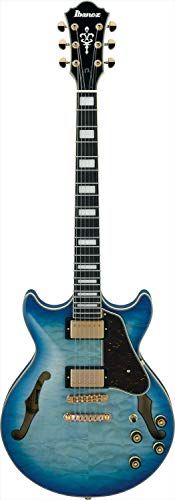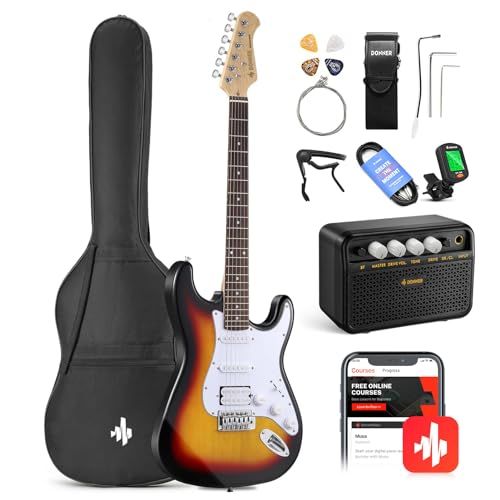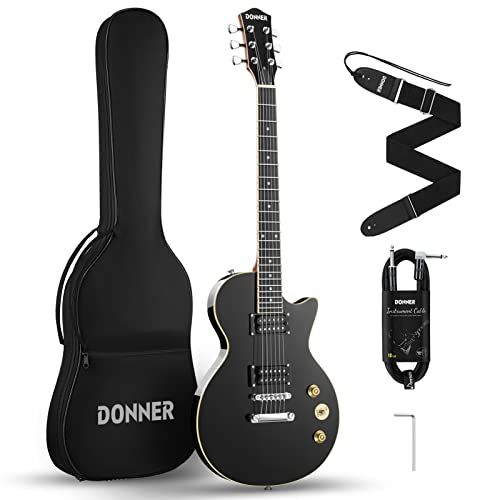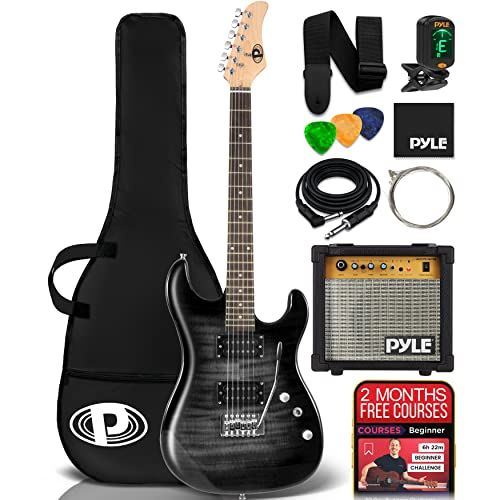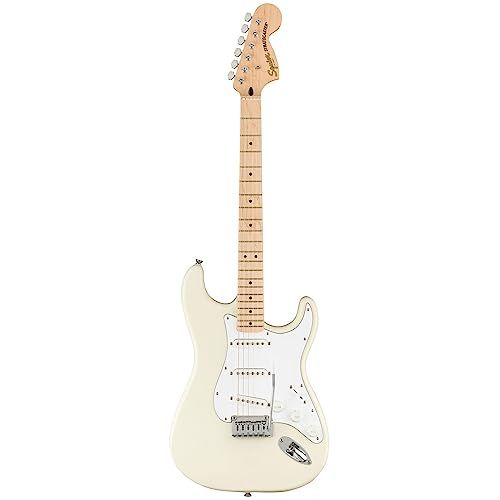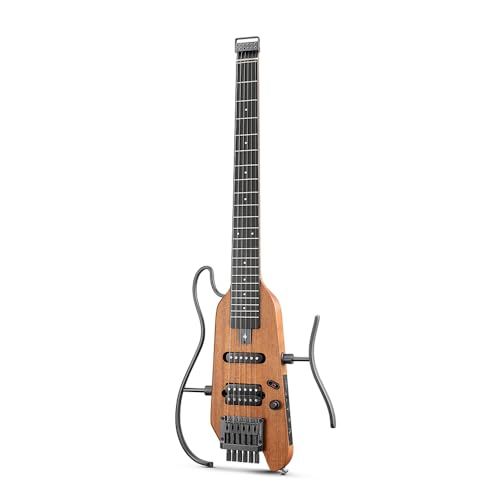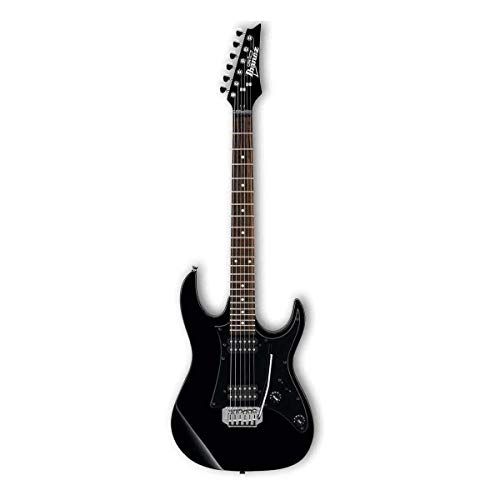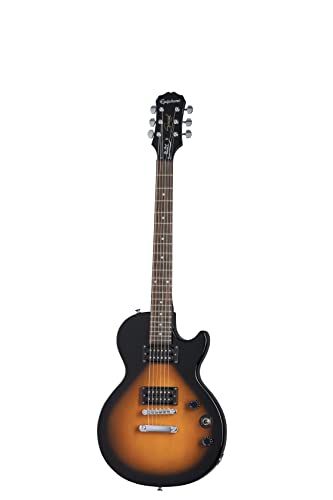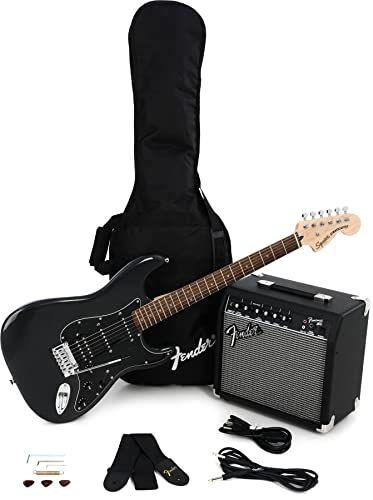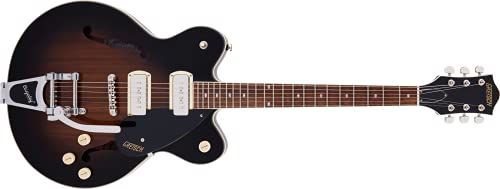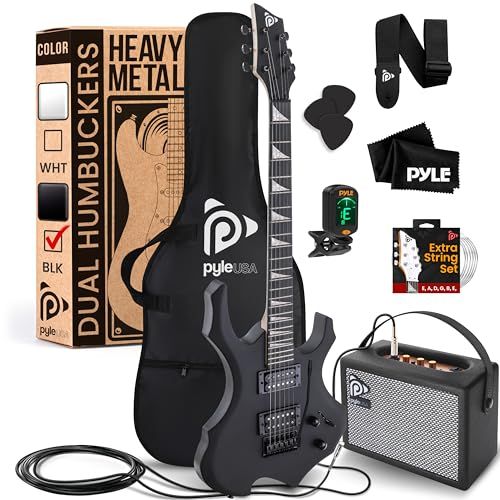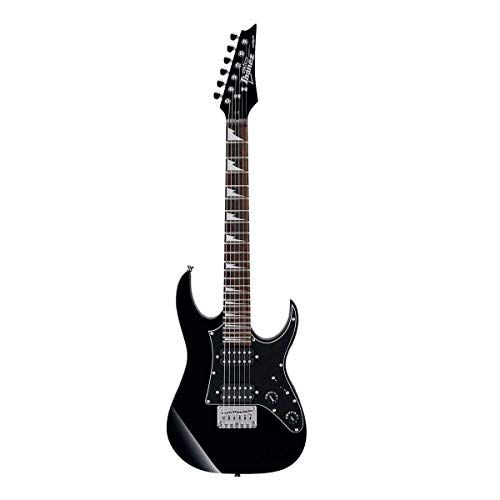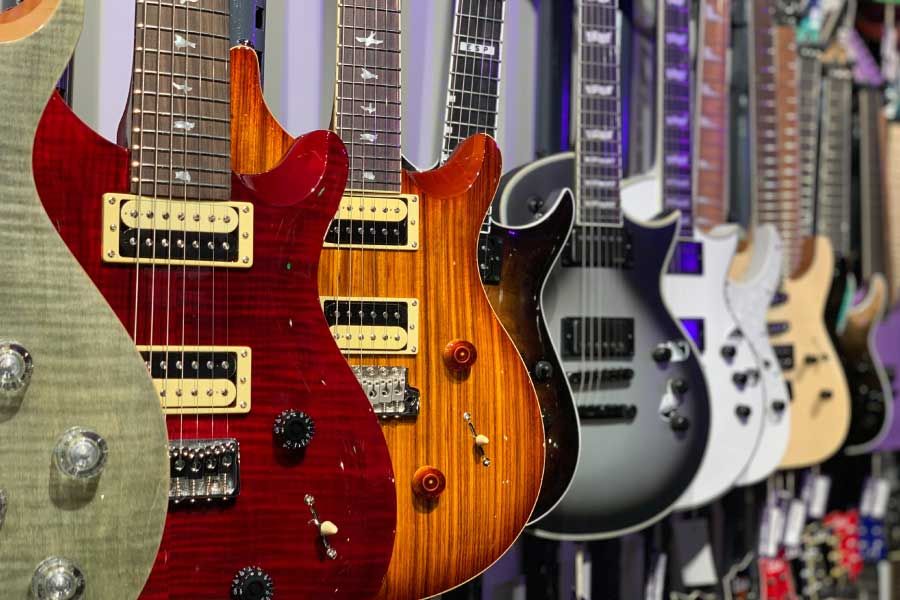
The electric guitar has revolutionized music since its mainstream introduction in the mid-20th century. While experiments with electrically amplifying string instruments dates back to the 1920s and earlier, the first mass produced and commercially successful electric guitars emerged in the 1930s and 1940s.
Companies like Gibson, Rickenbacker and Fender led the way in electric guitar innovation. Their early models like the Gibson ES-150, Rickenbacker Electro lap steel guitar and Fender Telecaster and Stratocaster became icons and paved the way for the dominance of the electric guitar in many popular music genres.
Electric guitars enabled guitarists to play solos and riffs louder and for longer durations than what was possible on acoustic guitars. The unique tone from pickups, pedals and amplifiers alongside innovative playing techniques helped evolve the instrument into a popular lead instrument.
Icons like Chuck Berry, Jimi Hendrix, Eric Clapton, Jimmy Page, Eddie Van Halen and many more demonstrated the capabilities of the electric guitar and helped cement its status as one of the most beloved and influential instruments in modern music.
Today, the electric guitar remains an essential part of bands and live music across genres from rock, blues, jazz, metal, pop, hip-hop and more. Continued innovation by manufacturers help the electric guitar evolve alongside the progression of music. For aspiring musicians, learning to play the electric guitar allows tapping into a rich history while mastering an expressive and versatile contemporary instrument.
Main Types
There are three main types of electric guitars: solid body, hollow body, and semi-hollow body.
Solid Body
Solid body electric guitars are the most common type. As the name suggests, these guitars have a solid wood body, as opposed to a hollow body. The solid body allows for increased sustain and gives the guitar a brighter, louder tone. The most famous solid body guitar is the Fender Stratocaster. Solid body guitars have a huge range of sounds, from sparkling clean tones to extreme distortion, making them incredibly versatile.
Hollow Body
Hollow body electric guitars have a hollow body construction, much like an acoustic guitar. This gives them a warm, rich and resonant tone. The hollow body allows them to be played without amplification, but also makes them prone to feedback when amplified at high volumes. Jazz players often favor this type of guitar. Famous models include the Gibson ES-175 and Epiphone Casino.
Semi-Hollow Body
Semi-hollow electric guitars have a tone that sits somewhere between a solid body and hollow body guitar. They have a solid center wood block running through the body with hollow "wings" on the sides. This design minimizes feedback while still retaining some of the resonant tone of a fully hollow body. The warmth and character of semi-hollow guitars have made them popular with blues and rock players. Iconic models include the Gibson ES-335 and Gretsch 6120.
Construction
Electric guitars are constructed from various wood types and components that significantly impact their sound and playability.
Body Wood
The body wood is a major factor in an electric guitar's tone. Softer woods like alder and basswood allow pickups to resonate more, producing a warmer, rounder tone. Harder woods like maple and ash have a brighter, crisper sound. Mahogany is a popular choice for its balanced tones. Composite bodies made from plastics and carbon fibers are also available for great sustain and minimized feedback.
Neck
The neck should be comfortable and fast to play while providing stability for accurate intonation. Most electric guitars have bolt-on or set necks made from maple or mahogany. The shape and thickness of the neck affects playability. Thinner necks allow easier fretting while thicker necks promote sustain.
Fretboard
The fretboard is commonly made from rosewood or ebony as they wear well from extensive use. Some guitars have maple fretboards for enhanced tonal brightness. The width and radius of the fretboard also influence playability. Wider fretboards accommodate shredding while a flatter radius helps with bending strings.
Bridge
Bridges anchor the strings and transmit their vibrations to the body. Common bridges include fixed, tremolo, and vibrato types. Fixed bridges offer tuning stability while tremolo and vibrato bridges enable effects like dips, dive bombs, and warbles by altering string tension.
Pickups
Pickups are magnets that convert the string vibrations into an electrical signal. Common types are single coil and humbucker. Single coils have a bright, crisp tone suited for pop and country. Humbuckers have a thick, warm sound for hard rock and metal. Guitars can have multiple pickups to provide tonal versatility.
Sound and Tone
The sound and tone of an electric guitar depends on several key factors:
Pickups
The pickups on an electric guitar are magnets that convert the strings' vibrations into an electrical signal. There are two main types of pickups - single coil and humbucker. Single coil pickups tend to have a brighter, twangier sound while humbuckers have a thicker, warmer tone. The combination, positioning and individual wiring of the pickups affects the overall sound.
Woods
Electric guitars use solid wood, laminates or composites for the body and neck. Harder woods like alder and ash transfer string vibrations efficiently for brightness and sustain. Softer woods like mahogany have a warmer, rounder sound. The type of wood affects resonance and tone.
Electronics
The guitar's electronic components like the volume and tone knobs, selector switch, capacitors and pots modify the pickup signal. These allow guitarists to shape the tone by adjusting the highs and lows and volume levels. Active pickups and preamps can add gain and overdrive to the sound.
Amp Pairing
Playing an electric guitar through an amplifier is key to achieving the desired tone. Guitar amps color and amplify the sound. Tube amps distort pleasingly when overdriven, while solid state and digital amps offer cleaner tones. The amplifier settings and electronic effects pedals used also significantly impact the overall guitar tone.
Playing Styles
The electric guitar is extremely versatile and can produce a wide range of sounds depending on the player's technique and choice of effects. There are two main playing styles for the electric guitar: lead guitar and rhythm guitar.
Lead Guitar
The lead guitar generally plays the melody or solos during a song. Lead guitarists often use techniques like bending, vibratos, hammer-ons and pull-offs to produce expressive sounds. They may also utilize effects like distortion, overdrive or wah-wah to create a unique tone. Lead guitar playing often involves fast solos, melodic lines and improvisation.
Rhythm Guitar
Rhythm guitar provides the chordal and rhythmic accompaniment to the melody and solos. Rhythm guitarists strum chords or play riffs to establish the harmonic and rhythmic foundation. This allows the other instruments and vocals to follow a steady beat. Rhythm guitarists may use additional effects like chorus or reverb to thicken the overall sound. The rhythm guitar ties all the elements of the song together.
Effects
Electric guitarists can choose from a vast array of effects pedals and processors to sculpt their tone. Here are some of the most popular effects used:
Distortion/Overdrive - Adds grit and sustain to the guitar sound, from subtle warmth to heavy saturation. Used in blues, rock and metal.
Delay/Echo - Creates repeating echoes of the original sound. Provides depth and atmosphere to lead lines.
Wah-wah - Sweeps the frequency range, allowing guitarists to emulate vocal-like sounds. Popular in funk and rock solos.
Chorus - Produces a shimmery, thick sound like multiple guitars playing together. Often used to fatten up rhythm guitar parts.
Reverb - Simulates the acoustic environment of a physical space. Used to make the guitar tone sound huge and ambient.
The endless combinations of effects allow electric guitarists the flexibility to craft tones for any genre or style. From jazz to metal and everything in between, effects help guitarists shape their unique sound.
Iconic Models
The electric guitar world has been shaped by several iconic models that have stood the test of time and influenced generations of players. Here are three of the most popular and influential electric guitars:
Fender Stratocaster
The Fender Stratocaster is likely the most popular and iconic electric guitar model. First released in 1954, its distinctive double-cutaway body, three single-coil pickups, and tremolo bridge system have become instantly recognizable.
The Strat's bright, clear tone cuts through a mix nicely and works for a variety of musical styles. Famous Strat players include Jimi Hendrix, Eric Clapton, Stevie Ray Vaughan, and John Mayer.
Gibson Les Paul
Gibson's Les Paul model was released in 1952 and was one of the first solid body electric guitars. Its mahogany body and humbucking pickups give it a thick, warm tone that works well for rock, blues, and jazz.
The Les Paul has been played by guitar greats like Duane Allman, Slash, Jimmy Page, and Eric Clapton. Its heavy weight and thick neck profile has also made it iconic.
Ibanez RG
The Ibanez RG is a modern rock and metal guitar known for its fast, thin, neck profile and comfortable contoured body shape. First introduced in the late 1980s, the RG became popular with hard rock and metal guitarists like Steve Vai and Joe Satriani.
The RG typically comes with a double locking tremolo bridge and active pickups, ideal for dive bombs and heavy distortion. More recent RGs have exotic shaped bodies and eye-catching finishes, while retaining the thin, fast neck that makes them popular with shredders.
Notable Players
The electric guitar has been used by many legendary musicians over the decades. Here are 3 of the most influential and iconic electric guitarists:
Jimi Hendrix
Jimi Hendrix is considered one of the most important and influential electric guitarists in rock music history. Hendrix pioneered new techniques and effects like distortion, feedback and wah-wah. His unique style mixed elements of blues, funk and psychedelic rock. Some of his most famous songs are "Purple Haze", "Foxy Lady" and his rendition of "All Along the Watchtower". Hendrix is known for his flair and showmanship on stage playing his Fender Stratocaster upside down and behind his back.
Eric Clapton
Eric Clapton is regarded as one of the most significant blues and rock guitarists. He was ranked #2 in Rolling Stone's list of 100 Greatest Guitarists of All Time. Clapton was a member of influential bands like The Yardbirds, Cream and Derek and the Dominos. He popularized the Gibson Les Paul guitar with his work in the late 60s and 70s. Clapton pioneered the use of controlled feedback and inspired later blues rock guitarists. He continues to record and perform live shows today.
Eddie Van Halen
As the lead guitarist and founder of Van Halen, Eddie Van Halen has been hailed as one of rock music's most influential and important guitar players. His groundbreaking two-handed tapping technique mixed with heavy distortion led to his innovative guitar solos and melodies. Van Halen introduced a variety of exotic scales and harmonics rarely used by rock guitarists before. His favorite guitar was his custom Frankenstein (or "Frankenstrat") built from a Stratocaster and Gibson parts. Van Halen's revolutionary playing inspired generations of guitarists.
Tuning and Maintenance
Standard tuning for electric guitars refers to E A D G B E. This is the most common tuning used on 6-string electric guitars. Other alternate tunings may be used, but standard tuning allows for easy transition between chords and scales.
Changing strings is an important part of regular electric guitar maintenance. New strings will stay in tune better and produce brighter tone. Strings should be changed at least every few months, depending on how much they are played. It's recommended to change one string at a time to maintain proper tension on the neck. Remove old strings by turning the tuning peg to loosen. Pull the string out of the tuning post hole and off the bridge. Thread the new string through the hole and tune up to pitch.
Adjusting intonation involves setting the saddles on the bridge so notes fretted at the 12th fret match the pitch of the 12th fret harmonic. This ensures proper tuning up and down the neck. To check intonation, play the 12th fret harmonic on the string and compare to the 12th fret note. If flat, move the saddle back. If sharp, move it forward. Make small adjustments and recheck until they match. Proper intonation is crucial for electric guitar tuning stability.
Getting Started
Getting started with electric guitar can be an exciting journey, but also requires commitment and consistent practice. Here are some tips for beginners:
Choosing a Beginner Guitar
Look for well-known brands like Fender, Gibson, Epiphone, Squier, Ibanez, or Yamaha. Avoid cheap no-name guitars.
Consider a "starter pack" that includes an amp, cords, picks, etc. This will have everything you need to start playing.
Try out different guitar sizes and shapes to find one that feels comfortable. Solid body guitars like the Stratocaster or Les Paul are common for beginners.
Expect to spend $200-$500 for a decent beginner electric guitar. Better to buy quality that will last than a super cheap guitar.
Learning Chords and Scales
Start with open chords like G, C, D, Em, Am. Use chord charts or guitar tabs to learn finger placements.
Practice chord changes by strumming through chord progressions for familiar songs. This will build muscle memory.
Learn the pentatonic minor scale shape starting on the low E string. This scale shape is essential for blues and rock improvisation.
Use a metronome or drum tracks to keep tempo and work on timing. Develop rhythm skills even without complex chords or lead playing.
Basic Effects Pedals
An overdrive or distortion pedal like the Boss DS-1 provides the quintessential electric guitar tone for rock and metal.
Delay and reverb pedals like the Electro-Harmonix Memory Boy or TC Electronic Hall of Fame provide ambience and interest for lead playing.
A multi-effects processor like the Zoom G1Xon helps beginners access various tones and effects like overdrive, chorus, delay, and more.
Start with one or two versatile pedals and build your effects pedalboard over time. Make sure the pedals suit your playing style and musical tastes.
The key for beginners is consistent practice of chord changes, scales, rhythm, and finding the right sound. Be patient in developing technique and having fun with this versatile instrument!
Conclusion
The electric guitar has revolutionized music since its mainstream introduction in the mid-20th century. Its versatility, playability, and signature sound have made it integral to countless genres from rock and metal to blues and jazz.
Key points covered in this article:
Main types of electric guitars include solid body, semi-hollow, and hollow body styles. Each provides a distinct look, feel, and sound.
Electric guitars rely on electromagnetic pickups to convert string vibrations into electrical signals. The type, number, and placement of pickups impacts the guitar's tone and versatility.
Iconic electric guitar models like the Fender Stratocaster, Gibson Les Paul, and Ibanez RG have become symbols of genres and eras in music history.
Effects like overdrive, distortion, delay, and chorus allow electric guitarists to shape their sound. Pedals and amps with built-in effects offer creative options.
Electric guitars require regular tuning and maintenance for optimal playability and longevity. But their solid construction makes them more durable for gigging musicians.
The electric guitar empowered the rise of new genres, allowed for greater sonic experimentation and flexibility, and became a fixture in everything from massive stadium shows to intimate studio recordings. It remains one of the most influential and expressive instruments across nearly all forms of popular music worldwide.
Electric Guitars comparison
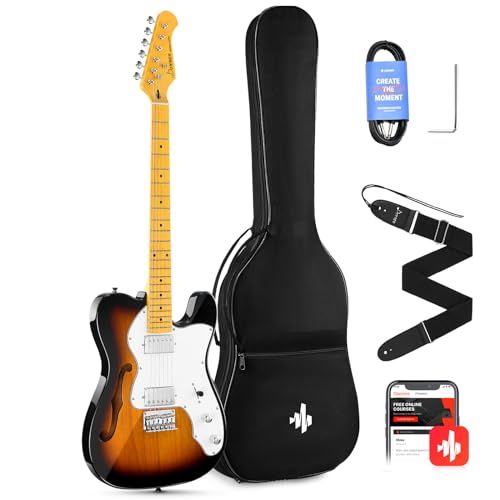 | 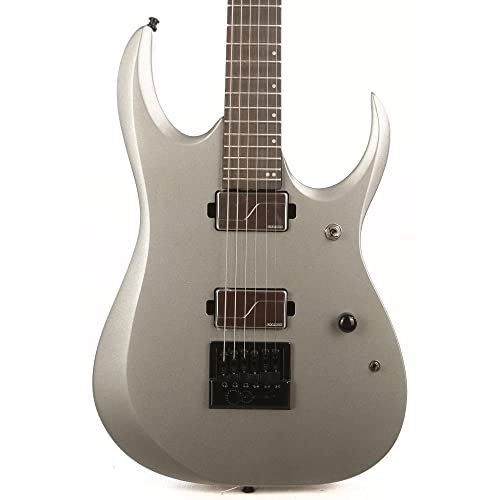 |  |  |  | |
|---|---|---|---|---|---|
| Model | Donner DJC-1000S | Ibanez RGD61ALETMGM | Fender 145233500 | Donner DST-200 EC1380 | Grote LPF-001 |
| Body Material | Poplar | Nyatoh | Alder | Poplar | Maple |
| Color Name | Sunburst | Metallic Gray | 3-Color Sunburst | Void Black | Red |
| Fretboard Material | Maple Wood | Ebony Wood | FE0145233500 | Purpleheart | HPL |
| Guitar Bridge System | Guitar Single Swing Bridge (All Silver) | - | Hard Tail | Guitar Single Swing Bridge (All Silver) | Tune-O-Matic |
| Guitar Pickup Configuration | H | H | H | H-S-S | H-H |
| Item Model Number | - | RGD61ALETMGM | 145233500 | EC1380 | LPF-001 |
| Item Weight | 10.47 pounds | 13 pounds | 9.35 pounds | 10.48 pounds | 7.48 pounds |
| Product Dimensions | - | 43.5 x 17.5 x 4.5 inches | 41.75 x 15 x 4.25 inches | - | 40.16 x 13.19 x 1.42 inches |
| String Material | Nickel Plated | - | Alloy Steel | Nickel plated | Nickel |
| Neck Material Type | Maple | Walnut Wood | Maple | Maple | Maple |
| Brand | Donner | Ibanez | Fender | Donner | Grote |
| Color | Sunburst | Metallic Gray | 3-Color Sunburst | Void Black | Red |
| Hand Orientation | Right | Right | Right | Right | Right |
| Price | $159.99 | $1399.99 | $829.99 | $179.99 | $399 |
FAQ
What are electric guitars?
Electric guitars are stringed instruments that produce sound when their metal strings vibrate. Unlike acoustic guitars, electric guitars rely on pickups and an amplifier to produce a loud, amplified sound. The vibration of the strings is converted into electrical signals by the pickups, which are then sent to an amplifier.
How do electric guitars work?
Electric guitars work by using pickups to convert the vibration of the strings into electrical signals. The pickups are electromagnetic, so when the metal strings vibrate within the magnetic field, a small electric current is produced. This current is sent to an amplifier, which boosts the signal and outputs the sound through a speaker. The amp and speaker are what give electric guitars their characteristic loud, distorted tones.
What are the different types of electric guitars?
Some common types of electric guitars include the solid body, semi-hollow body, hollow body, and archtop. Solid body guitars like the Fender Stratocaster and Gibson Les Paul offer a crisp, focused tone and sustain. Semi-hollow and hollow body electric guitars like the Gibson ES-335 have a warmer, more rounded tone. Archtop electric guitars have a carved top and produce a sound similar to an acoustic guitar.
What are the parts of an electric guitar?
The main parts of an electric guitar are the body, neck, bridge, pickups, strings, tuners, knobs, output jack, strap buttons and tremolo arm. The wooden body helps shape and amplify resonance. The neck has frets and tuning pegs. The pickups convert string vibrations into electric signals. Knobs and switches alter tone and volume.
How do you change the sound of an electric guitar?
There are several ways to change an electric guitar's sound:
Switch between the bridge, neck or middle pickups for different tones
Adjust the tone knobs for more treble or bass
Use guitar effects pedals like distortion, chorus, reverb, and delay
Adjust the amp's settings and use its equalization (EQ) controls
Swap out pickups for hotter, higher output versions
What gear do you need to play an electric guitar?
The basic gear needed is:
Electric guitar
Guitar cable
Guitar amp
Guitar picks
Guitar strap
Optional: Effects pedals (distortion, delay, etc.)
Optional: Footswitch for switching effects
Optional: Guitar case or gig bag
How do you care for an electric guitar?
Keep it in a climate controlled environment away from heat/cold extremes
Wipe down strings after playing to remove dirt, skin oils and sweat
Clean fretboard with lemon oil or special cleaner
Check neck relief and adjust truss rod as needed
Oil tuning machines if becoming stiff
Periodically polish body, neck and hardware
Store in a hard case or gig bag when not playing
What accessories are available for electric guitars?
Popular electric guitar accessories include:
Effect pedals like distortion, reverb, delay
Power attenuators to control amp volume
Footswitches for changing channels/effects
Capos for transposing pitch
Extra strings, picks and cables
Straps, stands and wall hangers
Humidifier for acoustic-electric models
Guitar polish, cloths and cleaning tools
How much does an electric guitar cost?
Electric guitar prices range widely:
Basic beginner models - $150 to $400
Mid-range guitars - $400 to $900
Professional quality guitars - $1,000 to $5,000+
Vintage and collectible models - Can be $10,000+
Prices vary based on the brand, build quality, hardware, electronics and materials used. Many factors affect cost like wood type, manufacturing country, labor, etc. Beginners can get great starter instruments for under $500 while pro musicians invest in premium instruments.
Where can you buy an electric guitar?
You can buy electric guitars at:
Local music stores and guitar shops
Large retailers like guitar centers
Online retailers like Sweetwater and Reverb
Direct from guitar brands' websites
Used at guitar stores, pawn shops, Reverb and eBay
Custom luthiers can build you a custom instrument
It's best to try guitars in person before buying if possible. Take your time and find the model that feels and sounds best for your budget and needs. Consider used guitars to save money on quality instruments.
